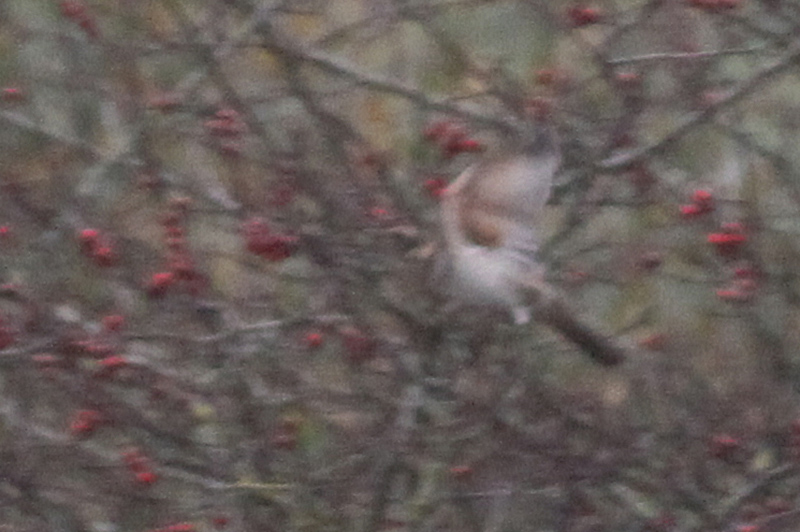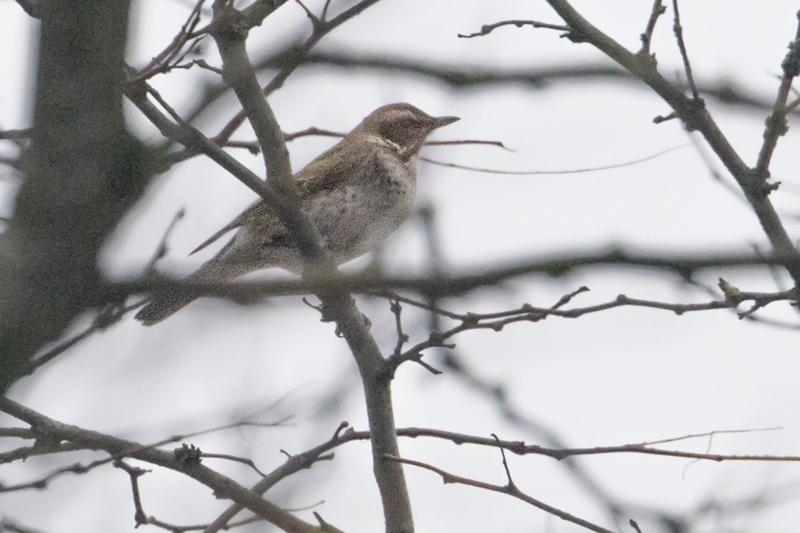Dusky Thrush - Turdus eunomus
In the afternoon of 8 November Jos Welbedacht was wandering in his neighbourhood - Beijum Gr - testing his new binoculars. He checked some Blue Tits Cyanistes caeruleus and Great Tits Parus major plus some Blackbirds Turdus merula. Then an odd thrush came into view with a rufous wing panel. With no camera at hand, he ran back to his house, returned as quickly as he could and took some pictures. He uploaded the pictures to waarneming.nl. There Maarten Hotting a.o. confirmed that the bird was actually a Dusky Thrush Turdus eunomus and warned other birders by the Dutch Birding Bird Alerts and local WhatsApp groups at around 15:08. Several birders made it on time before dark.
Next day a huge crowd gathered and the bird proved to be quite elusive and was seen a few times between 8:00 and 10:00 hours and finally well seen by a large crowd (c 200) at around 9:16 hours. Then somebody ignited some fireworks and the bird was not seen the whole day until 16:50 when a single birders saw it a hundred meters north of the place where it was last seen. The next day the bird could not be found and on Friday 11 November the bird was brought in by a cat, presumably killed by a window pane a day earlier.
The bird showed some chestnut brown feathers on the underparts, so some further investigation is needed to see to what extent other thrushes are involved like for example Naumann's Thrush Turdus naumanni or Red-throated Thrush Turdus ruficollis.

The bird as I saw it in a flash at 9:07 hours on 9 November, happily Marten Miske, who stood next to me, managed to take these pictures; © Marten Miske.

Dusky Thrush on 9 November showing chestnut wing coverts and bases of remiges; © Marten Miske.

Dusky Thrush on 9 November at c 9:20 hours, showing typical underparts pattern and supercilium; © Jaap Denee.
After a long discussion, the bird was finally accepted in 2018 as the third record for the Netherlands, with previous records on 20 November 1899 near Dokkum Fr and 20 February 1955 in Kampen Ovl.
More information about and pictures of the bird can be find here.
Do you want to go to the main-index, the 2016-index or the next new species in 2017, the Seebohm's Wheatear?


